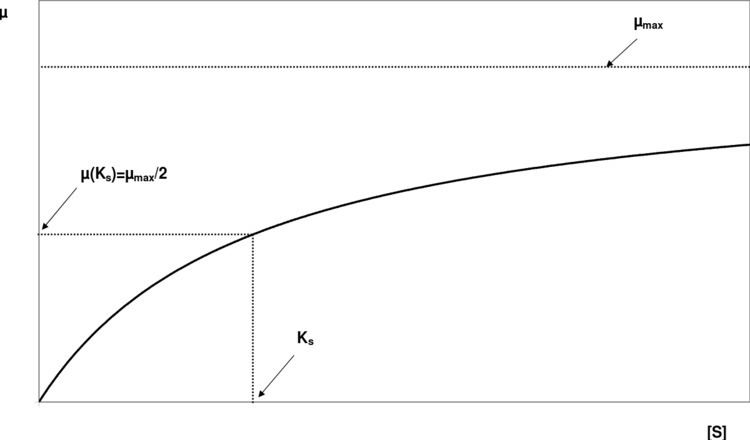 | ||
The Monod equation is a mathematical model for the growth of microorganisms. It is named for Jacques Monod who proposed using an equation of this form to relate microbial growth rates in an aqueous environment to the concentration of a limiting nutrient. The Monod equation has the same form as the Michaelis–Menten equation, but differs in that it is empirical while the latter is based on theoretical considerations.
Contents
The Monod equation is commonly used in environmental engineering. For example, it is used in the activated sludge model for sewage treatment.
Equation
The Monod equation is:
where:
μmax and Ks are empirical coefficients to the Monod equation. They will differ between species and based on the ambient environmental conditions.
Graphical determination of constants
As with the Michaelis–Menten equation graphical methods may be used to fit the coefficients of the Monod equation:
